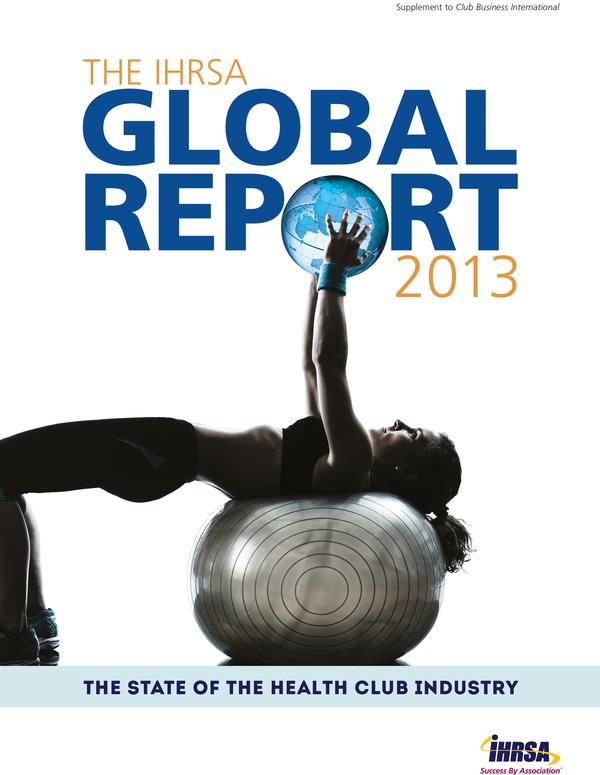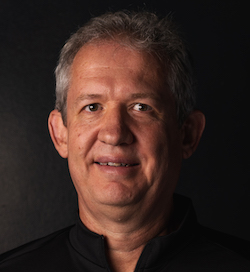features
Global fitness market
The health club industry continues to exhibit strong performance, especially in light of ongoing economic uncertainty. Globally, it generates an estimated US$75.7bn in annual revenue annually from more than 150,000 clubs.
Roughly 132m members belong to health clubs worldwide. These figures are expanded on in The 2013 IHRSA Global Report, published by IHRSA in May 2013.
“The global health club industry continues to expand, thanks to strong growth in Latin America, Germany, and China, coupled with a solid performance in the US – which is home to more health clubs than any other single country,” said Jay Ablondi, IHRSA’s executive vice president of global products. “Worldwide, consumers are demonstrating an increased demand for health club services and club operators are responding with conveniently located facilities and a wide range of different amenities.”
While, for the most part, the key health club performance numbers have all been moving in the right direction since the global economic downturn, there is, of course, room for improvement. Certain markets – most notably Latin America – appear to be ripe for growth in the coming years. Other countries, especially those in Europe, face serious challenges. Globally, more consolidation is expected, as is the continued proliferation of franchises.
Europe
The economy in Europe continues to challenge markets in Spain, Italy, and Portugal. Preliminary estimates show a decline of up to 20per cent in market size, club count, and memberships. Key performance indicators are also estimated to have declined by roughly 10 per cent in Greece and Ireland.
The health club industry in the UK and Germany has remained stable, with growth in select sectors. Total club count and membership increased slightly in the UK as 5,900 clubs attracted 7.6m members. The UK has seen notable growth in the low-cost segment, as well as strong member loyalty at independent facilities. The total number of members in Germany held strong as nearly 7.9m Germans belonged to more than 7,500 health clubs. Chains claim nearly half of the country’s health club members as 3.5m belong to a multi-site health club or fitness centre.
Overall, the European health club industry remains the most lucrative region with the greatest number of health clubs. Europe generates roughly US$32bn in revenue from more than 45,000 clubs. Nearly 41.9m members belong to health clubs in Europe.
Competition
IHRSA board member and Danish entrepreneur Rasmus Ingerslev, the CEO of low-cost chain Fresh Fitness, sees the industry evolving quickly, and competition intensifying. “As a result, there will be even more segmentation, which will create clear value propositions in the niche, low-, mid-, and high-end markets,” he predicted. “On the positive side, I believe this will help attract more members, growing the overall market. My concern is that we’ll see bubbles in segments that grow too fast, specifically the low-cost sector, and collapses in the middle-market.”
Asia-Pacific
The health club industry shows particular potential the a growing Asia-Pacific region. The region serves 17m members at more than 21,000 health clubs. Asia generates roughly USUS$11.5 billion in revenue from more than 18,000 clubs serving 14.6m members. With nearly 3,000 businesses, the industry is Australia and New Zealand generates around USUS$2.1 billion in revenue from some 2.3m members.
According to The Australian Fitness Industry Report, nearly one out of five Australians (18per cent) participate in fitness activities. This number is expected to exceed 7m by 2020, as fitness activities represent the second most popular exercise after walking. The Australian fitness industry draws from a range of successful business models which engage consumers: fitness studios, 24-hour facilities, full-service gyms, and outdoor personal training.
In the Asia-Pacific region, China attracted nearly 3.5m members to more than 2,600 health clubs last year and Hong Kong, alone, has approximately 600 clubs.
In addition to posting strong performance in China, the Asia-Pacific is home to key leading club operators. Central Sports, Renaissance, and Konami Sports & Life – all in Japan – often rank among the top 25 club companies worldwide in terms of revenue, club count, and number of memberships.
IHRSA senior research manager Melissa Rodriquez anticipates rapid growth in?2013 in India and China, two of the world’s largest economies. “Anytime Fitness and Snap Fitness have each expanded their franchise network to India,” she said. “And as the second-largest global economic power, the Chinese market is also ripe for development.”
The Americas
In the US, the health club industry held steady in 2012, although successful club operators reported improved performance. Industry-wide, revenue reached an estimated US$21.8 billion in 2012. Comparable to 2011 results, more than 50m card-carrying members belonged to 30,500 U.S. health clubs in 2012.
In Canada, 6,242 clubs generated US$2.6bn last year by serving 5.7m members. Canada ranks ninth worldwide in terms of industry revenue.
Looking south, Mexico generated an estimated US$1.5bn, serving 2.7m members in 2012. Its 7,826 clubs rank the nation third globally in terms of number of facilities, behind the US and Brazil.
Latin america
In Latin America, the industry is robust with opportunities for growth. According to The IHRSA Latin American Report, health clubs generate an estimated US$5.5bn in revenue from more than 46,000 health clubs in fifteen Latin American markets. Brazil leads all Latin American markets in revenue (US$2.4bn), club count (23,398), and members (7m). Mexico and Argentina represent the second and third largest markets in the region. Mexico generates an estimated US$1.5bn in revenue from more than 7,800 health clubs serving 2.7m members. Nearly 6per cent of Argentinians belong to a health club as the market attracts 2.3m members.
Low membership penetration rates and increasing health awareness present opportunities for industry growth in Latin America. On average, 1.7per cent of Latin Americans belong to a health club. According to Gallup, only 53per cent of Latin Americans exercise at least once a week. Club operators in Latin America are uniquely positioned to address inactivity, rising obesity rates, stress, and other lifestyle indicators.
The IHRSA Index – which demonstrates the financial performance of the commercial health club industry in the United States – has shown improved year-over-year performance for three consecutive years. Improvements were recorded from 2011 to 2012 in all nine performance indicators measured, most notably non-dues revenue and EBITDAR. Overall, revenue grew by 8.1per cent from 2011 to 2012 as total membership dues revenue rose by 6.7per cent. Same-store units also reported improvements of 2.9per cent and 2.5per cent, respectively, in total sales and non-dues revenue.
According to the most recent edition of IHRSA’s Profiles of Success, which was published in December 2012 and analyses club financial and operational benchmarks for 2011, participating clubs saw their?net membership increase by 3.1per cent and their revenues increase by 3.6per cent during that year.
Opportunities Abound
While such modest growth might not?normally be considered a great success,?coming as it does on the heels of five years of unpredictable – often stormy – economic conditions, it’s viewed by industry leaders as confirmation?of the industry’s resilience and potential.
Consumer trends, particularly “the consumer hour- glass,” introduce both challenges and opportunities for the future. “As customers gravitate toward the higher and lower ends of the market, middle-market players will come under pressure,” said industry consultant Bryan O’Rourke, who is the cofounder and CEO of Integerus. “At the high end, spa and resort facilities are flourishing, along with experiential niche models, such as cycling and mind/body studios. At the budget end, operations with business models like that of Planet Fitness are expanding. Many clubs in the middle are trying to be everything to everyone, but they’re at the greatest risk.”
The health club industry is ripe for consolidation, according to Rick Caro, the president of Management Vision, Inc., a club consulting company based in New York. “The theme for over?16 years from the financial community is that the health club industry is one of the most fragmented that they have ever studied,” he explained. “Beginning in late 2011 and for all of 2012, several major club companies were sold to other club companies.” At the end of the day, however, less than 1per cent of all of the US clubs were consolidated, he added.
The 2013 IHRSA Global Report
The 2013 IHRSA Global Report is available in print or as a PDF at ihrsa.org/ihrsa-global-report for $139.95 ($69.95 for IHRSA members). Contact [email protected] with questions.

ABOUT THE AUTHOR
Kristen Walsh is Associate Publisher at IHRSA – the International Health, Racquet & Sportsclub Association
EMAIL: [email protected]
TEL: + 1 617.951.0055 ext 117








































































